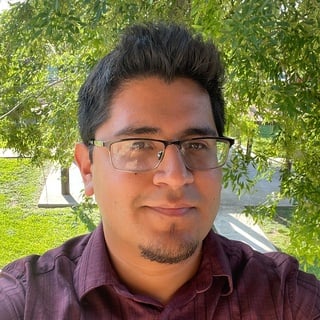Unity Developer Interview Questions
The realm of game and AR/VR development has been revolutionized by Unity. To scout for developers capable of crafting immersive experiences, this guide presents a set of interview questions tailored for Unity. Delve into their grasp of C#, 3D graphics, and Unity's unique scripting APIs, ensuring you select talents who can breathe life into your virtual worlds.
What is Unity3D primarily used for?
Answer: Unity3D is primarily used for developing video games for web plugins, desktop platforms, consoles, and mobile devices.
2.
What is the primary scripting language used in Unity?
Answer: C# is the primary scripting language used in Unity.
3.
Describe the Unity's component-entity system.
Answer: In Unity, every object in a scene is a GameObject, which can have multiple components attached to it, such as meshes, lights, or scripts to define its behavior.
4.
How does Unity handle multi-platform game development?
Answer: Unity provides a flexible and comprehensive set of tools to build games for multiple platforms by adapting to different screen sizes and utilizing platform-specific features.
5.
What is a prefab in Unity?
Answer: A prefab is a blueprint for creating multiple objects of the same type, allowing developers to design an object once and instantiate it in various scenes or scripts.
6.
How do you handle physics in Unity?
Answer: Unity comes with a built-in physics engine, and by attaching Rigidbody and Collider components, developers can simulate real-world physics.
7.
Explain the difference between Update, FixedUpdate, and LateUpdate.
Answer: Update runs once per frame, FixedUpdate runs at fixed intervals for physics calculations, and LateUpdate runs after all Update functions have been called.
8.
What is the purpose of Layers and Tags?
Answer: Layers define which objects collide with each other, and Tags allow developers to identify and differentiate objects quickly.
9.
How do you optimize a game for better performance in Unity?
Answer: By reducing draw calls, optimizing assets and scripts, using occlusion culling, and efficiently managing physics calculations.
10.
What's the difference between a Shader and a Material in Unity?
Answer: A Shader defines how to render an object, while a Material is an instance of a Shader, which can have specific textures and colors assigned.
11.
How can you create a multiplayer game in Unity?
Answer: By utilizing Unity’s built-in networking, or using third-party solutions like Photon or Mirror.
12.
Explain coroutines in Unity.
Answer: Coroutines allow developers to break up tasks over multiple frames, enabling delayed or asynchronous operations without blocking the main thread.
13.
What is NavMesh?
Answer: NavMesh is Unity's pathfinding system, allowing characters to navigate complex scenes intelligently.
14.
How do you manage different resolutions and aspect ratios for various devices?
Answer: By using Unity’s Canvas Scaler for UI and setting up multiple camera viewports and anchors to adapt to different screen sizes.
15.
Describe Unity's Lightmapping feature.
Answer: Lightmapping is the process of pre-computing the brightness of surfaces in a scene to enhance visuals without realtime lighting calculations.
16.
What's the purpose of the Animator Controller?
Answer: It manages the flow and transitions between animations for a character or object.
17.
How do you handle audio in Unity?
Answer: By utilizing the AudioSource and AudioClip components, and adjusting 3D sound settings for spatial audio effects.
18.
Describe the concept of a Raycast in Unity.
Answer: Raycasting is a method of detecting objects hit by a line (or ray), often used for things like shooting, AI sensing, or mouse clicks.
19.
How can you handle user inputs in Unity?
Answer: By using the Input class which allows detection of key presses, mouse movements, and touch inputs.
20.
What is a Terrain in Unity and how is it used?
Answer: A Terrain is a game object that represents large, open-world areas. It offers tools for creating detailed landscapes with textures, trees, and other natural elements.
21.
How do you manage game state or save game progress?
Answer: By using PlayerPrefs, Serialization, or external plugins to store and retrieve game data.
22.
What are the main differences between 2D and 3D development in Unity?
Answer: While both use similar fundamental principles, 2D development focuses on sprites, sprite renderers, and 2D physics, whereas 3D involves meshes, materials, and 3D physics.
23.
Describe Unity’s Asset Bundle system.
Answer: Asset Bundles allow developers to package external assets, download them on demand, and load them at runtime, optimizing the initial game size.
24.
What are Unity Packages?
Answer: Unity Packages are collections of assets, shaders, scripts, and other resources that can be imported into different projects.
25.
How do you handle memory management in Unity?
Answer: By using object pooling, avoiding frequent instantiations, properly destroying unused objects, and utilizing Unity’s Profiler to monitor memory usage.
Hiring an Unity Developers With Braintrust
In your pursuit of Unity Developers, we stand ready to assist in finding top talent swiftly. With our services, you can expect to be matched with five highly-qualified Unity Developers within just minutes. Let us streamline your recruitment process and connect you with the skilled professionals you seek to meet your needs effectively.
Looking for Work

Anjali Kabariya
Toronto, ON, Canada
- React
- AWS
- Full Stack Engineering
- Node.js
Looking for Work

John Fitzpatrick
New York, NY, USA
- TypeScript
- Frontend Engineering
- Angular
- Web
Looking for Work

Alberto Alvarado
Edinburg, TX, USA
- C#
- Game Development
- Unity
Get matched with Top Unity Developers in minutes 🥳
Hire Top Unity Developers


